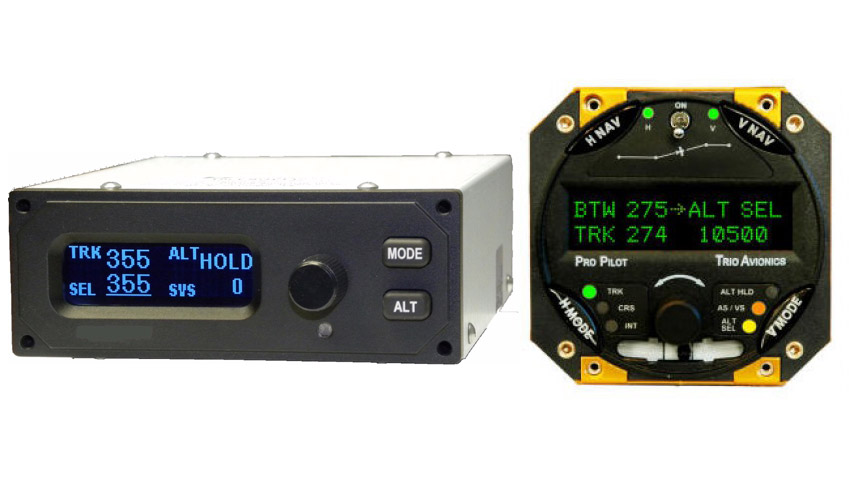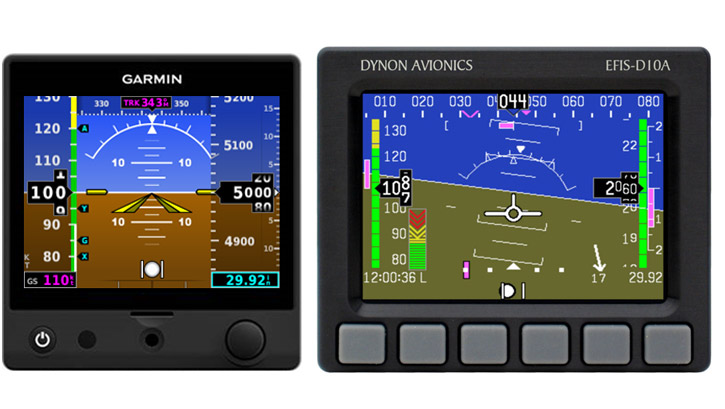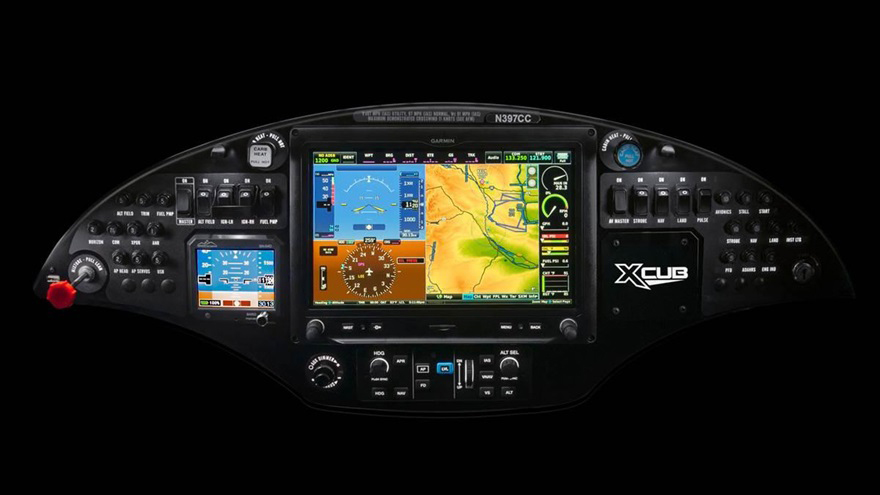Cheaper, safer, better
The future of avionics is bright

When Aspen Avionics introduced its combination electrically powered attitude indicator and horizontal situation indicator for legacy airplanes 10 years ago, it was a revelation. Garmin and others quickly followed, and now there are tens of thousands of Aspens, Avidynes, Garmin G500s, and other displays in Cessna 182s, Beechcraft Bonanzas, Piper Saratogas, and the like. With a price tag of anywhere between $10,000 and $20,000, plus installation, these new options represented an opportunity for some owners—but left those with Cessna 172s and similar, lower-valued aircraft without a practical path to replace their aging technology.
Now, AOPA and other industry associations are working with the FAA and manufacturers on a range of instrument certification changes bringing a new tier of incredibly capable, relatively low-cost options that increase safety and make financial sense to owners, no matter the airplane’s hull value.
Although manufacturers generally don’t release sales numbers, it’s likely that Garmin’s G5 is one of the top beneficiaries in this new suite of avionics choices. It’s also one of the best examples of what’s possible with the new efforts. The G5 was originally launched as a small primary or backup attitude indicator for the Experimental market. It shows attitude, speed, altitude, and turn coordinator information. There’s also a four-hour battery backup. What would have been tens of thousands of dollars for a certificated aircraft cost less than $2,000 for an Experimental aircraft. Now, a new certified version is a little more than $2,000.

Experimental aircraft can equip with these reliable, safer alternatives for lest cost because the equipment doesn’t go through the same certification processes as for certificated aircraft. Yet for decades the fact that amateur-built aircraft were flying in the same airspace as certificated aircraft didn’t seem to matter to the FAA. Then, a few years ago, attitudes started to change. Leadership at the FAA realized that if safety was the agency’s primary goal, which it obviously is, then there was no logical reason less-expensive safety-enhancing equipment couldn’t also be made available for certificated aircraft. The question was how to make that happen without significant regulatory changes.
What’s changed
Perhaps the easiest way to explain the shift that has allowed less expensive and safer alternatives to migrate into cockpits is to explain what hasn’t happened. No laws were written, and no regulations have changed. The major movement to reform small-aircraft certification under FAR Part 23—although an encouraging shift that may enable less expensive and more capable aircraft—has virtually nothing to do with the G5, Dynon EFIS-D10A, and new less costly autopilots. Instead, the combination of a new engineering validation standard and an attitude change from FAA leadership has created a set of internal regulatory and order interpretations that AOPA and other associations have seized upon.
Certifying a piece of modern avionics is a complex endeavor. When all the systems were mechanical, the process was relatively straightforward. The FAA put out a technical standard order (TSO) for each type of equipment that listed specific performance standards, and a manufacturer simply developed the equipment, made sure it met the specifications of the order, and applied for TSO approval. That all changed when software found its way to the cockpit. Instead of verifying final performance, the FAA required each line of software code to be validated. That validation is called DO-178 compliance testing, and for manufacturers it can mean millions of dollars of additional investment in bringing a product to market.
Bill Stone, Garmin’s senior business development manager, said the additional burden can significantly increase certification costs. “If a product through ASTM standards is a couple million to develop, it might be $8 or $10 million to TSO for aircraft under 6,000 pounds, it could be $20 million to cover the entire Part 23 market.” Stone said despite the additional cost, the unit would have no perceptible difference in performance.

The industry has known for years that DO-178 was a hindrance to certifying many products, and has been pushing for an alternative means of compliance. In 2004, with FAA support, the industry gathered with representatives from ASTM International to create a new standard for software; ASTM sets standards for products and materials around the globe. This alternative method is more modern, and has enabled makers of electronic flight information displays, autopilots, and more to enter a certification pathway at far less cost than previous projects.
Typically described as non-TSO units, these newer avionics have gone through a variety of certification pathways, and the process continues to evolve as the manufacturers try to push to see safer alternatives hit the market. Stone said the FAA has begun allowing a return to a more goal-oriented certification, where only the device’s performance is verified.
“If you look at the G5, yes, it has software in it, but yes, it’s a simple device as well,” he said. “What we’ve come to agreement with the agency with, collectively, is we’ve come full circle. With the G5 we’re using ASTM as a box-level standard. We design to the specifications, and we test and verify at the box level that we’re meeting those specifications. With a simple system it’s not really necessary to get under the hood and test what’s inside,” Stone said.
Once the design has been certified, a company must receive the FAA’s blessing to produce the equipment, which can come in the form of a parts manufacturer approval (PMA). The FAA inspects the company’s quality control system and generally confirms the company can continue to produce parts at the same high level where the product was initially certified. Previously it didn’t matter if the product was an attitude indicator bound for a Cessna 172 or a full electronic flight information system going into a Boeing 737—the standard was the same. As the industry pushed back on these requirements, the FAA began agreeing to a more risk-based PMA approach. With simple equipment such as attitude indicators and HSIs in aircraft under 6,000 pounds, the risk to the passengers and the public is significantly different than it is for a 737.
While this might not matter as much for a company such as Garmin, which already has stringent PMA standards in place, it can mean millions of dollars of investment for companies such as autopilot manufacturers TruTrak and Trio, which have previously only manufactured equipment for the Experimental market.
Bright future
Everyone involved in these efforts agrees that the future, while bright, is also quite murky. Approvals have been primarily on a case-by-case basis. AOPA and the Aircraft Electronics Association are working with the FAA toward a written policy that will make the process more repeatable and predictable—two key factors for companies trying to decide whether to invest in new technology.
We’ve seen attitude indicators, HSIs, and autopilots. There are still many possibilities, including the potential for at least one company to work on a non-TSO ADS-B Out solution. Dynon is working on getting an entire panel suite certified, and Trio and TruTrak continue to expand their autopilot approval lists. If the first decade of the twenty-first century was known as the glass era, this decade promises to be known as the time glass-cockpit technology finally came to the masses.
Email [email protected]



